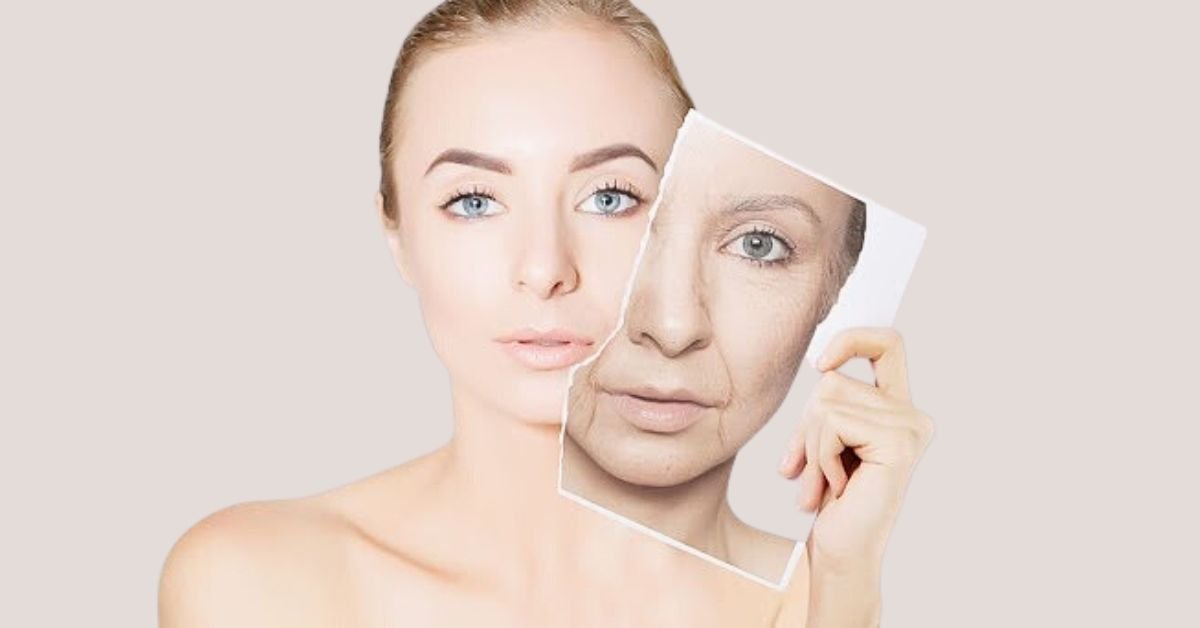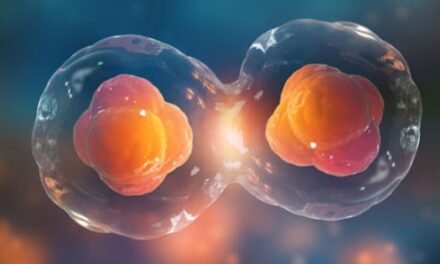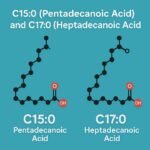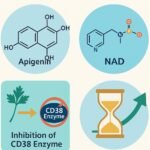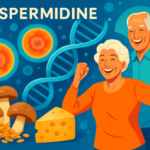Advanced Glycation End Products
Advanced Glycation End Products (AGEs) are a group of compounds that play a significant role in the ageing process and the development of age-related diseases. These products are formed through a process known as glycation, in which sugar molecules react with proteins and lipids in the body. The accumulation of AGEs can have detrimental effects on various organs and tissues, leading to skin ageing, chronic diseases, and other health complications. In this article, we will explore the formation of AGEs, their impact on health, and strategies to reduce their formation and accumulation.Introduction to Advanced Glycation End Products (AGEs)
AGEs are a diverse group of molecules that are formed when sugars bind to proteins or lipids in a non-enzymatic process called glycation. This process occurs naturally in the body, but it can be accelerated by various factors such as high blood sugar levels, oxidative stress, and inflammation. AGEs are also introduced into the body through the consumption of foods that have been exposed to high heat during cooking or processing.What are AGEs and how are they formed?
AGEs are formed when a sugar molecule, such as glucose or fructose, reacts with a protein or lipid molecule in a process called glycation. This reaction results in the formation of cross-links between the sugar and the protein or lipid, altering their structure and function. Over time, these cross-links can accumulate and contribute to the ageing process and the development of various diseases.The role of AGEs in ageing and age-related diseases
The accumulation of AGEs in the body has been linked to the ageing process and age-related diseases. AGEs can contribute to the development of wrinkles, sagging skin, and other signs of premature ageing by disrupting the structure and function of proteins such as collagen and elastin, which are essential for maintaining the skin’s elasticity and firmness. Furthermore, AGEs have been implicated in the pathogenesis of chronic diseases such as diabetes, cardiovascular disease, and neurodegenerative disorders. These compounds can promote inflammation, oxidative stress, and the formation of reactive oxygen species (ROS), which can damage cells and tissues over time.Impact of AGEs on the skin and premature ageing
AGEs have a profound impact on the skin, contributing to premature ageing and the development of skin conditions. The accumulation of AGEs in the dermis can impair the synthesis of collagen and elastin, leading to the loss of elasticity and firmness. This can result in the formation of wrinkles, fine lines, and sagging skin. In addition, AGEs can induce inflammation and oxidative stress in the skin, further exacerbating the ageing process. They can also trigger the production of matrix metalloproteinases (MMPs), enzymes that break down collagen and elastin, accelerating the degradation of these essential proteins.The connection between AGEs and chronic diseases
The accumulation of AGEs has been strongly associated with the development and progression of chronic diseases. In diabetes, for example, high blood sugar levels contribute to the increased formation of AGEs. These AGEs can bind to specific receptors in various tissues, activating signalling pathways that promote inflammation, oxidative stress, and tissue damage. In cardiovascular disease, AGEs can contribute to the development of atherosclerosis, a condition characterised by the buildup of plaque in the arteries. AGEs can promote inflammation and oxidative stress in the arterial walls, leading to endothelial dysfunction and the formation of foam cells, which are key contributors to plaque formation. Similarly, AGEs have been implicated in the pathogenesis of neurodegenerative diseases such as Alzheimer’s and Parkinson’s. AGEs can trigger neuronal damage and inflammation, impairing cognitive function and accelerating the progression of these disorders.Dietary sources of AGEs and their effects on health
AGEs are not only formed within the body but can also be introduced through the diet. Foods that have been exposed to high heat during cooking or processing are particularly rich in AGEs. This includes grilled, roasted, fried, and broiled foods. Consuming a diet high in AGEs can contribute to the accumulation of these compounds in the body, exacerbating the ageing process and increasing the risk of chronic diseases. It is therefore important to be mindful of the cooking methods used and to incorporate healthier alternatives such as steaming, boiling, or using lower temperatures for cooking.Strategies to reduce AGE formation in cooking and food preparation
There are several strategies that can help reduce the formation of AGEs during cooking and food preparation. Marinating meats in acidic ingredients like lemon juice or vinegar before cooking can significantly reduce AGE formation. Adding antioxidant-rich herbs and spices such as rosemary, oregano, and turmeric to marinades or food preparations can also help mitigate the formation of AGEs. Steaming, boiling, and poaching are cooking methods that produce fewer AGEs compared to high-temperature cooking methods like grilling and frying. Using lower temperatures and shorter cooking times can also help minimise AGE formation.The role of antioxidants in combating AGEs
Antioxidants play a crucial role in combating the detrimental effects of AGEs. These compounds can neutralise free radicals and reduce oxidative stress, protecting cells and tissues from damage. Including antioxidant-rich foods in the diet, such as berries, leafy greens, and nuts, can help counteract the effects of AGEs. In addition to dietary antioxidants, topical antioxidants in skincare products can also help mitigate the impact of AGEs on the skin. Ingredients like vitamin C, vitamin E, and green tea extract can provide antioxidant protection, improve collagen synthesis, and reduce the signs of premature ageing.AGEs and Diabetes: Understanding the link
Diabetes is closely linked to the formation and accumulation of AGEs in the body. Chronically high blood sugar levels, as seen in diabetes, promote the production of AGEs through a process called glycation. These AGEs can contribute to the development of diabetic complications such as retinopathy, neuropathy, and nephropathy. Managing blood sugar levels through proper diet, exercise, and medication can help reduce the formation of AGEs and minimise the risk of diabetic complications. Additionally, consuming a diet low in AGEs can further support glycemic control and overall health in individuals with diabetes.AGEs and cardiovascular health
AGEs have emerged as important contributors to cardiovascular disease. The accumulation of AGEs in the arterial walls can promote inflammation, oxidative stress, and endothelial dysfunction, all of which play significant roles in the development of atherosclerosis. Reducing AGE intake through dietary modifications and adopting a lifestyle that includes regular physical activity can help mitigate the risk of cardiovascular disease. The inclusion of heart-healthy foods, such as fruits, vegetables, whole grains, and lean proteins, can further support cardiovascular health.AGEs and neurodegenerative diseases
The role of AGEs in neurodegenerative diseases has gained considerable attention in recent years. AGEs have been found to accumulate in the brains of individuals with Alzheimer’s disease and Parkinson’s disease. These compounds can induce neuronal damage, inflammation, and the formation of amyloid plaques and neurofibrillary tangles, which are hallmarks of these conditions. Further research is needed to fully understand the complex mechanisms underlying the relationship between AGEs and neurodegenerative diseases. However, adopting a healthy lifestyle that includes a balanced diet, regular exercise, and cognitive stimulation can contribute to brain health and potentially reduce the risk of these debilitating disorders.Detecting and measuring AGEs in the body
Detecting and measuring AGEs in the body can provide valuable insights into their accumulation and potential health implications. Various methods, including immunoassays and chromatographic techniques, can be used to assess AGE levels in blood, urine, and tissues. These measurements can help researchers and healthcare professionals evaluate the effectiveness of interventions aimed at reducing AGE formation and accumulation. Additionally, monitoring AGE levels in individuals with chronic diseases like diabetes can provide important information for disease management and risk assessment.Lifestyle changes to minimise AGE accumulation
Making lifestyle changes can help minimise AGE accumulation and promote overall health. Some key strategies include:- Opting for cooking methods that produce fewer AGEs, such as steaming, boiling, or using lower temperatures.
- Choosing fresh, unprocessed foods over heavily processed and fast-food options.
- Incorporating antioxidant-rich foods into the diet to counteract the effects of AGEs.
- Engaging in regular physical activity to support overall health and reduce the risk of chronic diseases.
- Managing blood sugar levels effectively through diet, exercise, and medication for individuals with diabetes.
Future research and advancements in AGE-related studies
Research on AGEs and their impact on health is an active and evolving field. Continued studies are needed to further elucidate the mechanisms through which AGEs contribute to ageing and age-related diseases. This includes exploring novel therapeutic approaches to mitigate the effects of AGEs and developing interventions that target their formation and accumulation. Future advancements may involve the development of pharmacological agents that can break down existing AGEs or inhibit their formation. Additionally, research focusing on the role of the gut microbiome in AGE metabolism and elimination may shed light on new strategies to modulate AGE levels and improve health outcomes.Conclusion
Advanced Glycation End Products (AGEs) are compounds that form through the glycation process and play a significant role in ageing and age-related diseases. The accumulation of AGEs can contribute to skin ageing, chronic diseases such as diabetes and cardiovascular disease, and neurodegenerative disorders. Dietary modifications, cooking methods, and the inclusion of antioxidants can help reduce AGE formation and minimise their impact on health. Further research and advancements in AGE-related studies are crucial for developing interventions and strategies to mitigate the effects of AGEs and promote healthy ageing.Frequently Asked Questions
Learn How it Works!
Can AGEs be completely eliminated from the body?
While it is challenging to eliminate all AGEs from the body, adopting healthy lifestyle habits and consuming a balanced diet can help minimise their formation and accumulation.
Are all cooking methods equally responsible for AGE formation?
No, high-temperature cooking methods such as grilling, frying, and broiling tend to produce higher levels of AGEs compared to methods like boiling, steaming, or stewing.
Can AGEs be reversed or repaired in the body?
The body has some natural mechanisms to break down and eliminate AGEs. However, reducing AGE formation through lifestyle choices is the primary approach to minimise their impact.
Are AGEs only harmful, or do they serve any beneficial purpose in the body?
While AGEs are mostly associated with detrimental effects, they do play a role in certain physiological processes. However, excessive AGE formation can lead to negative health consequences.
Can skincare products help counteract the effects of AGEs on the skin?
Yes, certain skincare products formulated with ingredients like antioxidants and anti-glycation agents can help minimise the visible signs of AGE-related skin damage and promote skin health.

